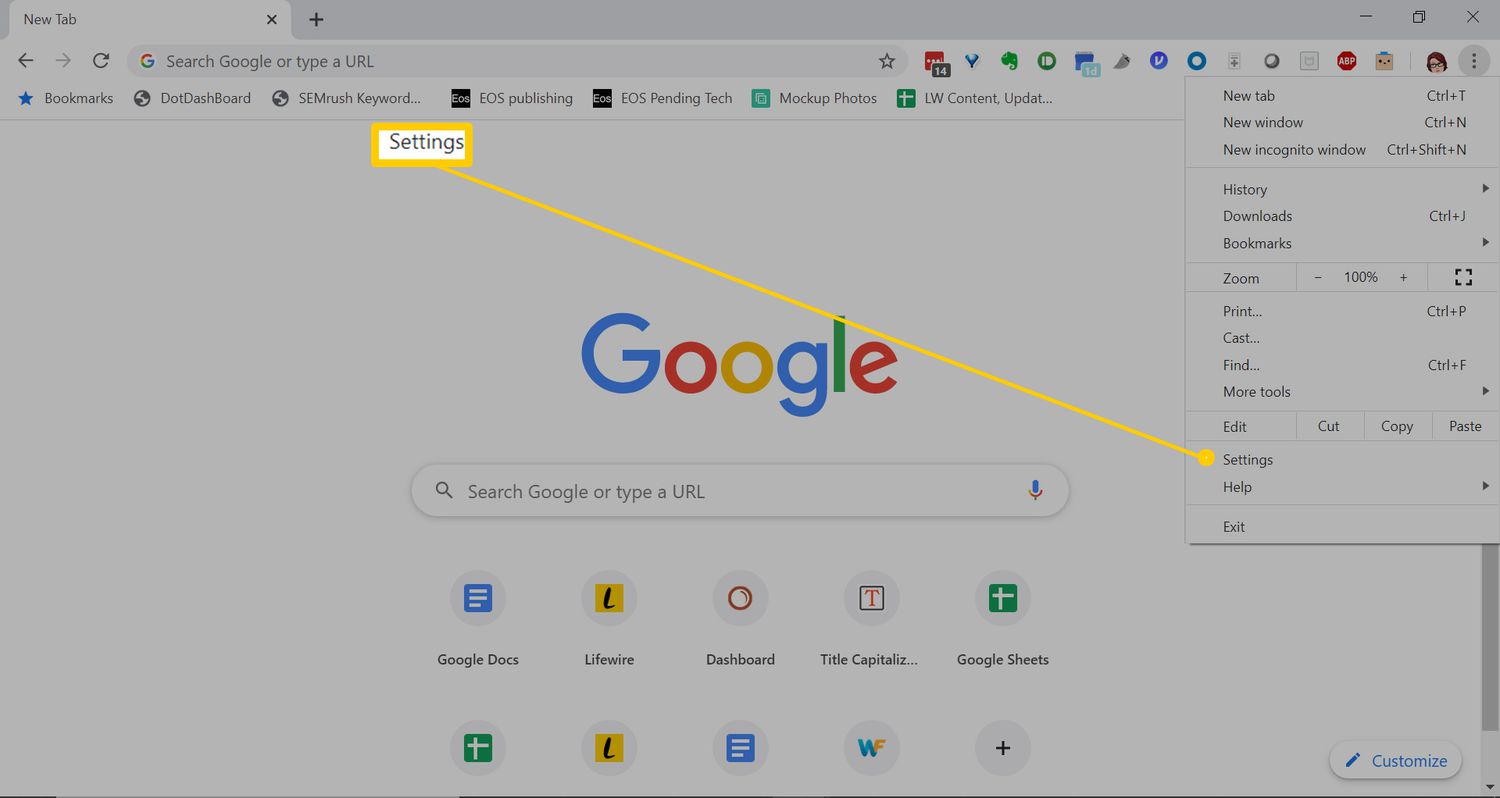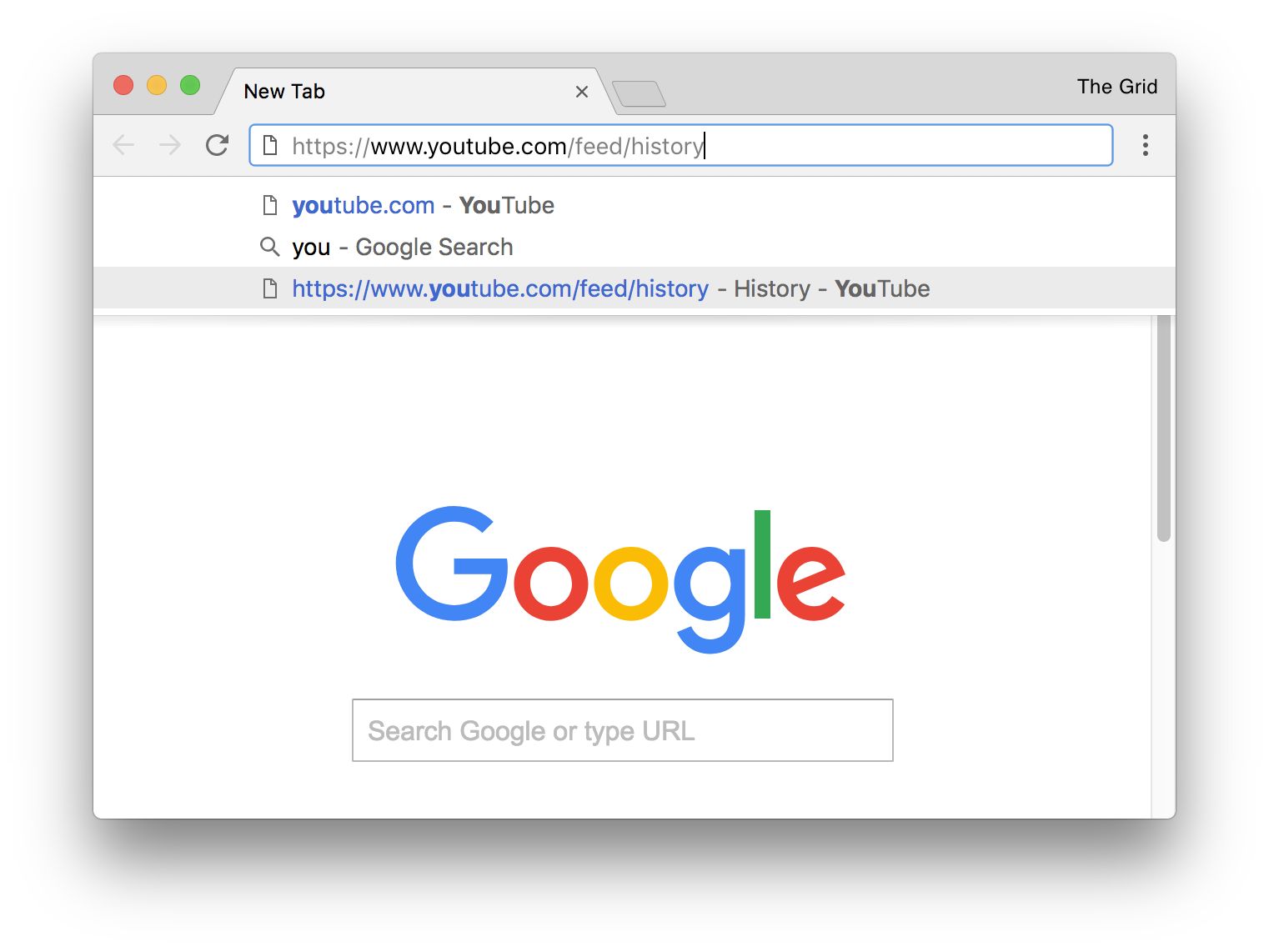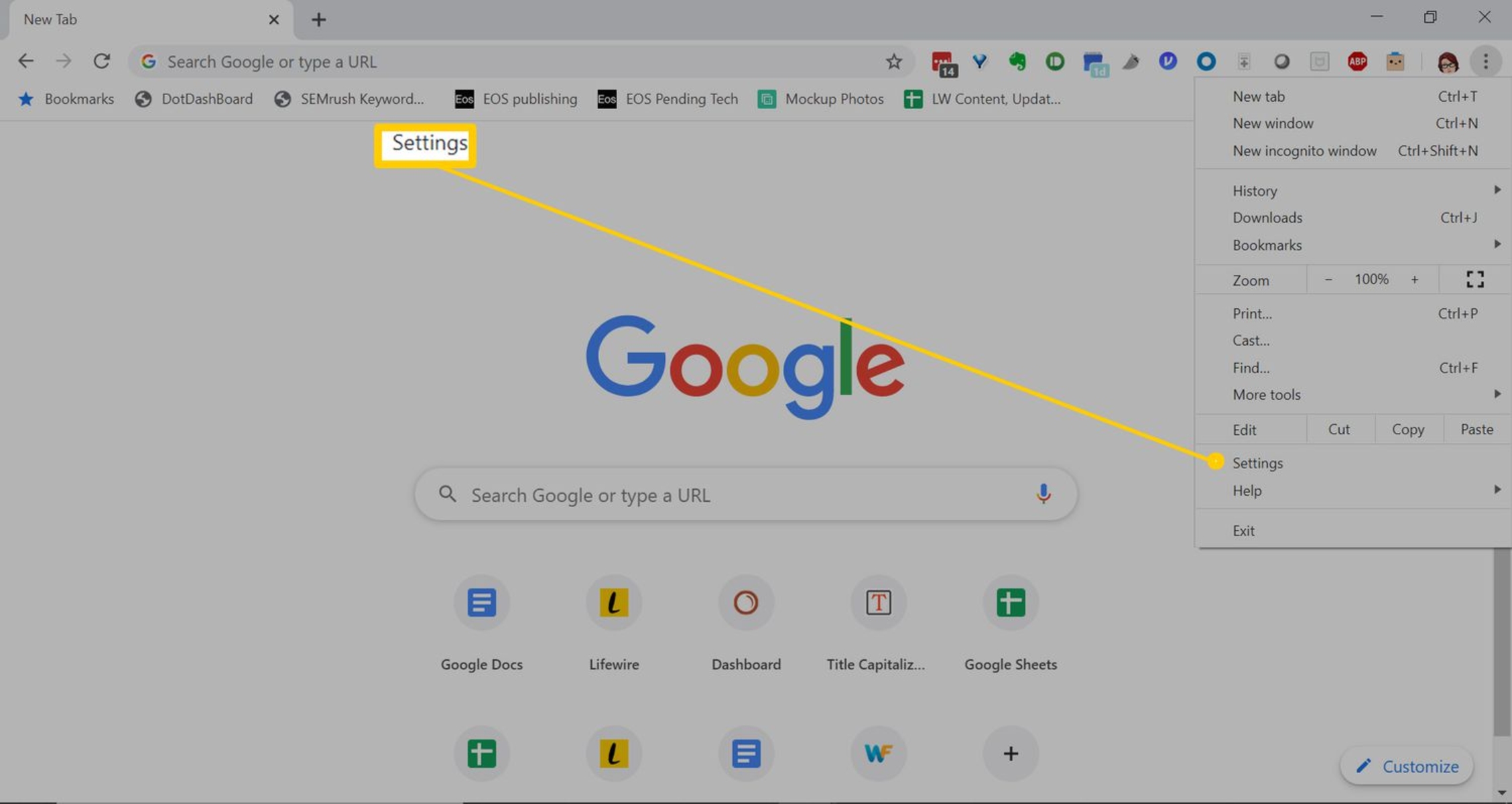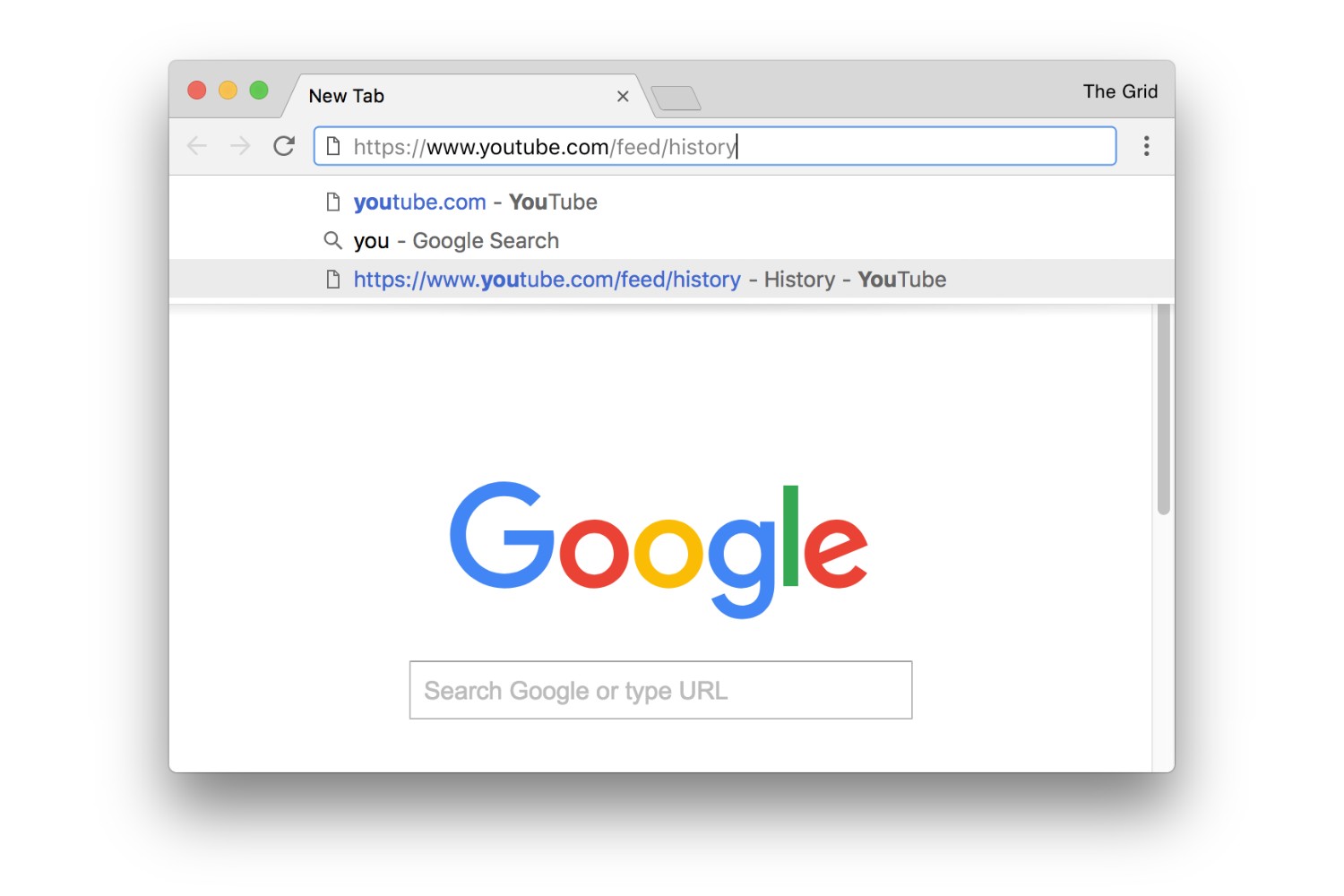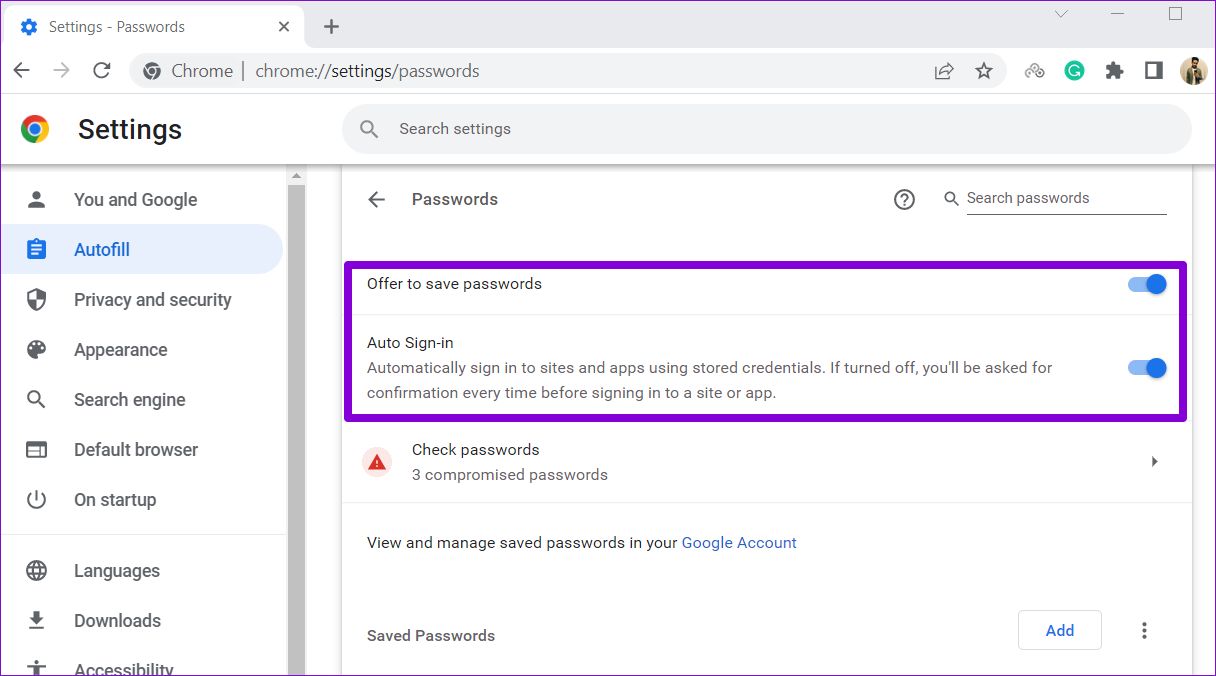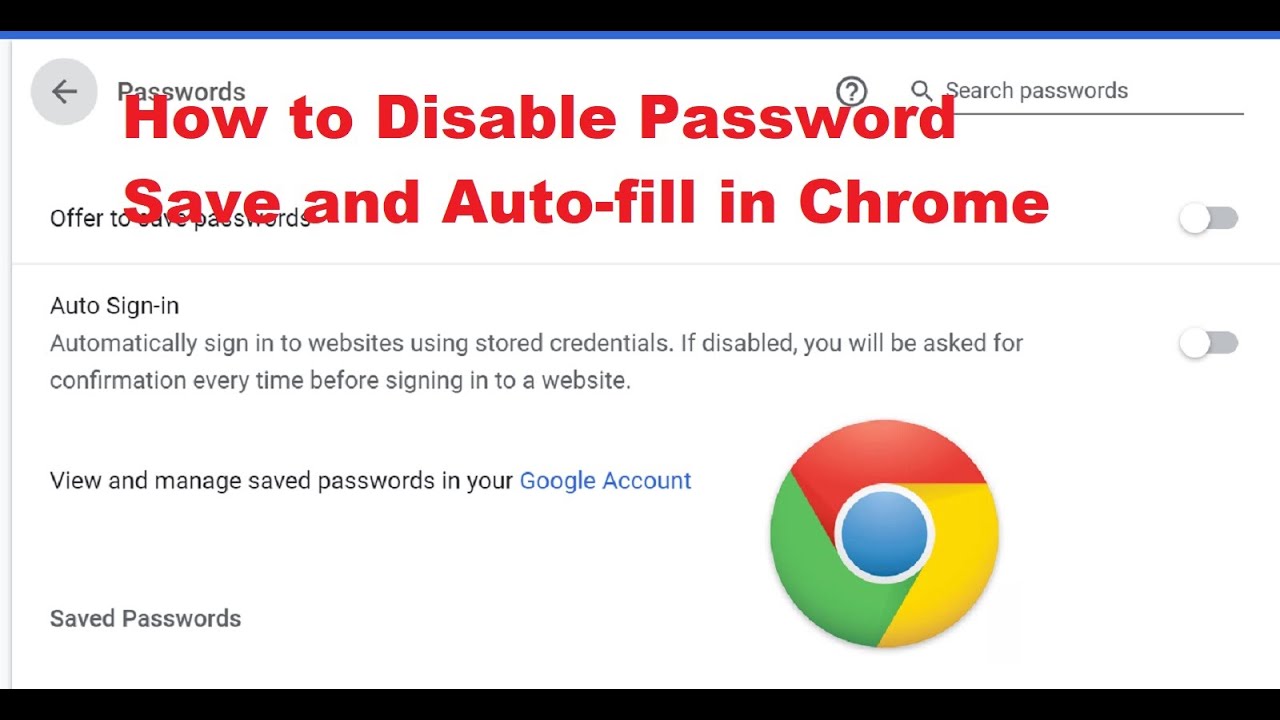Introduction
Autofill is a nifty feature in Google Chrome that aims to streamline the online form-filling process. It works by automatically populating fields with previously entered information, such as names, addresses, and payment details. While this can be incredibly convenient, it also raises privacy and security concerns. Users may find themselves wanting to delete autofill data for various reasons, such as safeguarding sensitive information, maintaining privacy, or simply starting afresh.
In this article, we will delve into the intricacies of Chrome's autofill feature and explore the reasons why one might want to delete autofill data. Additionally, we will provide step-by-step guidance on how to clear autofill data in Chrome, including the option to remove autofill data for specific websites. Furthermore, we will discuss how to manage autofill settings to tailor this feature according to individual preferences.
Understanding the functionality and implications of autofill in Chrome is crucial for users who seek to maintain control over their browsing experience. By gaining insights into the inner workings of this feature and learning how to manage it effectively, users can optimize their online privacy and security while harnessing the convenience that autofill offers. Let's embark on this journey to unravel the mysteries of Chrome's autofill and empower ourselves with the knowledge to wield this feature to our advantage.
Understanding Autofill in Chrome
Autofill is a built-in feature in Google Chrome designed to simplify the process of filling out online forms. When users enter information into fields such as name, address, email, or payment details, Chrome stores this data and offers to automatically populate similar fields in the future. This functionality aims to save time and effort, especially when repeatedly entering information across various websites.
The autofill feature in Chrome is not limited to basic text fields. It can also store and fill in credit card details, making online shopping and payment processes more convenient. Additionally, Chrome can save and autofill passwords, streamlining the login process for frequently visited websites.
While autofill undoubtedly offers convenience, it is essential to understand the potential implications and risks associated with this feature. One primary concern is privacy. By storing personal information, including addresses and payment details, Chrome becomes a repository of sensitive data. This raises questions about the security of this information and the potential for unauthorized access.
Moreover, the convenience of autofill can inadvertently lead to errors or the input of outdated information. For instance, if a user's address changes, autofill may continue to populate the old address, leading to inaccuracies in form submissions. This underscores the importance of understanding how to manage and, if necessary, delete autofill data in Chrome.
Furthermore, from a security standpoint, the autofill feature can pose risks if a device falls into the wrong hands. Unauthorized access to autofill data could compromise sensitive information, potentially leading to identity theft or financial fraud. Understanding the potential vulnerabilities associated with autofill underscores the importance of actively managing this feature to mitigate risks.
By comprehending the inner workings of autofill in Chrome, users can make informed decisions about when to utilize this feature and when to exercise caution. This understanding empowers users to take control of their browsing experience, leveraging the convenience of autofill while safeguarding their privacy and security.
In the next sections, we will explore the reasons why one might want to delete autofill data and provide detailed guidance on how to manage and clear autofill data in Chrome. Additionally, we will delve into the nuances of managing autofill settings to tailor this feature according to individual preferences.
Why You Might Want to Delete Autofill Data
There are several compelling reasons why users might want to delete autofill data in Google Chrome. These motivations stem from concerns related to privacy, security, accuracy, and the desire for a fresh start in managing online information.
Privacy Concerns
One of the primary reasons for considering the deletion of autofill data is privacy. Chrome's autofill feature stores sensitive personal information, including names, addresses, and payment details. While this data is intended to streamline form-filling processes, it also raises concerns about the security and privacy of this information. Users may be wary of leaving such sensitive data stored within the browser, especially on shared or public devices. Deleting autofill data can provide peace of mind by ensuring that this information is not readily accessible to others who may have access to the device.
Security Risks
The accumulation of personal and financial information within Chrome's autofill can pose security risks. In the event of unauthorized access to a device, this data could be exploited for malicious purposes, potentially leading to identity theft or financial fraud. By regularly clearing autofill data, users can mitigate these risks and reduce the likelihood of sensitive information falling into the wrong hands.
Accuracy and Relevance
Over time, autofill data may become outdated or inaccurate. Changes in addresses, email addresses, or credit card details can render previously stored information obsolete. This can lead to errors in form submissions or online transactions. By deleting outdated autofill data, users can ensure that the information being populated in online forms remains accurate and relevant, thereby minimizing the potential for errors and discrepancies.
Fresh Start
In some cases, users may simply desire a fresh start in managing their autofill data. This could be driven by a change in personal information, a shift in online shopping habits, or a proactive approach to maintaining digital hygiene. Deleting autofill data provides a clean slate, allowing users to selectively re-enter and manage their information as needed, without the clutter of outdated or unnecessary autofill entries.
By understanding the reasons behind the desire to delete autofill data, users can make informed decisions about managing their online information. In the following sections, we will explore the step-by-step process of clearing autofill data in Chrome, including the option to remove autofill data for specific websites, and discuss how to manage autofill settings to align with individual preferences.
How to Delete Autofill Data in Chrome
Deleting autofill data in Google Chrome is a straightforward process that empowers users to maintain control over their stored information. Whether driven by privacy concerns, security considerations, or the need for accuracy and relevance, clearing autofill data can be a proactive step in managing online privacy and security.
To delete autofill data in Chrome, follow these simple steps:
-
Accessing Chrome Settings: Begin by opening Google Chrome on your computer or mobile device. In the top-right corner of the browser window, click on the three vertical dots to open the Chrome menu.
-
Navigating to Settings: From the Chrome menu, hover over or click on "Settings" to access the browser's settings and customization options.
-
Managing Autofill Data: Within the Settings menu, locate and click on "Autofill" in the left-hand navigation pane. This will open the Autofill settings, where you can manage various types of autofill data, including addresses, payment methods, and passwords.
-
Clearing Autofill Data: To delete autofill data, select the category you wish to manage, such as "Addresses and more" or "Payment methods." Within each category, you will find an option to "Add" or "Edit." Click on "Edit" to view and manage the stored autofill entries.
-
Removing Autofill Entries: Within the "Edit" view, you can review the stored autofill entries and selectively remove individual entries by clicking on the associated "X" or "Remove" option. This allows you to delete specific autofill entries while retaining others as needed.
-
Confirming Deletion: After removing the desired autofill entries, ensure that the changes are saved by clicking on "Save" or "Done" within the Autofill settings.
By following these steps, users can effectively delete autofill data in Chrome, tailoring their stored information to align with their current needs and preferences. This process enables users to proactively manage their online information, addressing privacy, security, and accuracy concerns related to autofill data.
In addition to clearing autofill data for all websites, Chrome offers the flexibility to manage autofill entries for specific websites, providing granular control over stored information. This targeted approach allows users to maintain relevant autofill data for frequently visited websites while managing or deleting entries for less frequently accessed sites.
By understanding how to delete autofill data in Chrome, users can take proactive steps to safeguard their privacy, enhance security, and ensure the accuracy of their autofill information. This knowledge empowers users to wield the convenience of autofill while maintaining control over their stored data, aligning with their individual preferences and evolving needs.
Clearing Autofill Data for Specific Websites
In addition to clearing autofill data across all websites, Google Chrome provides the flexibility to manage autofill entries for specific websites. This granular control empowers users to selectively delete or edit autofill data for individual sites, allowing for a tailored approach to managing stored information.
To clear autofill data for specific websites in Chrome, follow these steps:
-
Accessing Chrome Settings: Open Google Chrome on your device and click on the three vertical dots in the top-right corner to access the Chrome menu.
-
Navigating to Settings: From the Chrome menu, select "Settings" to enter the browser's customization and configuration options.
-
Managing Autofill Data: Within the Settings menu, locate and click on "Autofill" in the left-hand navigation pane to access the Autofill settings.
-
Managing Autofill Entries for Specific Websites: Under the Autofill settings, click on "Addresses and more" or "Payment methods" to view the stored autofill entries. Here, you can identify and manage autofill data associated with specific websites.
-
Removing Specific Autofill Entries: Within the autofill entries for specific websites, you can selectively remove individual entries by clicking on the associated "X" or "Remove" option. This allows you to delete autofill data for particular websites while retaining entries for others.
-
Confirming Changes: After removing the desired autofill entries for specific websites, ensure that the changes are saved by clicking on "Save" or "Done" within the Autofill settings.
By following these steps, users can effectively clear autofill data for specific websites, tailoring their stored information to align with their preferences and browsing habits. This targeted approach allows users to maintain relevant autofill data for frequently visited websites while managing or deleting entries for less frequently accessed sites.
Clearing autofill data for specific websites in Chrome provides users with the ability to actively manage their stored information, ensuring that autofill entries remain accurate, relevant, and reflective of their current online activities. This level of control empowers users to maintain privacy, enhance security, and optimize the convenience of autofill according to their individual needs and preferences.
Managing Autofill Settings in Chrome
Managing autofill settings in Google Chrome allows users to customize the behavior of the autofill feature according to their preferences and privacy considerations. By accessing and adjusting the autofill settings, users can fine-tune how Chrome stores and populates autofill data, providing a tailored browsing experience that aligns with their individual needs.
To manage autofill settings in Chrome, follow these steps:
-
Accessing Chrome Settings: Open Google Chrome on your device and click on the three vertical dots in the top-right corner to access the Chrome menu.
-
Navigating to Settings: From the Chrome menu, select "Settings" to enter the browser's customization and configuration options.
-
Customizing Autofill Preferences: Within the Settings menu, locate and click on "Autofill" in the left-hand navigation pane to access the Autofill settings.
-
Adjusting Autofill Options: Under the Autofill settings, users can customize various autofill options, including addresses, payment methods, and passwords. This allows for granular control over the types of information Chrome stores and autofills.
-
Enabling or Disabling Autofill Features: Within the Autofill settings, users can choose to enable or disable specific autofill features, such as autofilling addresses, payment methods, and passwords. This level of control empowers users to tailor the autofill feature to their specific needs and privacy preferences.
-
Managing Saved Autofill Data: Users can review and manage the saved autofill data, including addresses, payment methods, and passwords. This may involve editing or removing outdated or inaccurate entries to ensure that the autofill feature remains accurate and relevant.
By managing autofill settings in Chrome, users can take proactive steps to customize their browsing experience while addressing privacy, security, and accuracy concerns related to autofill data. This level of control empowers users to maintain their privacy, enhance security, and optimize the convenience of autofill according to their individual needs and preferences.
By understanding how to manage autofill settings in Chrome, users can effectively tailor the autofill feature to align with their browsing habits and privacy considerations. This knowledge empowers users to wield the convenience of autofill while maintaining control over their stored data, ensuring that their online experience remains personalized and secure.
Conclusion
In conclusion, Google Chrome's autofill feature offers a convenient way to streamline online form-filling processes by automatically populating fields with previously entered information. However, the accumulation of personal and financial data within the autofill feature raises valid concerns related to privacy, security, and the accuracy of stored information. As users navigate the digital landscape, it is essential to understand the implications of autofill and take proactive steps to manage this feature effectively.
By gaining insights into the functionality of autofill in Chrome and the reasons for deleting autofill data, users can make informed decisions about how to wield this feature to their advantage. Privacy concerns, security risks, the need for accuracy, and the desire for a fresh start in managing online information are compelling reasons to consider clearing autofill data.
The step-by-step guidance provided on how to delete autofill data in Chrome empowers users to take control of their stored information, aligning with their current needs and preferences. Whether clearing autofill data across all websites or managing entries for specific sites, users can tailor their stored information to ensure relevance, accuracy, and privacy.
Furthermore, the ability to manage autofill settings in Chrome provides users with the flexibility to customize the behavior of the autofill feature according to their individual preferences. By fine-tuning autofill options and enabling or disabling specific features, users can optimize the convenience of autofill while maintaining control over their stored data.
In essence, understanding how to delete autofill data and manage autofill settings in Chrome empowers users to navigate the digital landscape with confidence. By actively addressing privacy, security, and accuracy concerns related to autofill data, users can harness the convenience of this feature while safeguarding their personal information.
As technology continues to evolve, the proactive management of autofill data in Chrome serves as a proactive step in maintaining online privacy and security. By leveraging the insights and guidance provided in this article, users can navigate the complexities of autofill with clarity and take control of their browsing experience.









